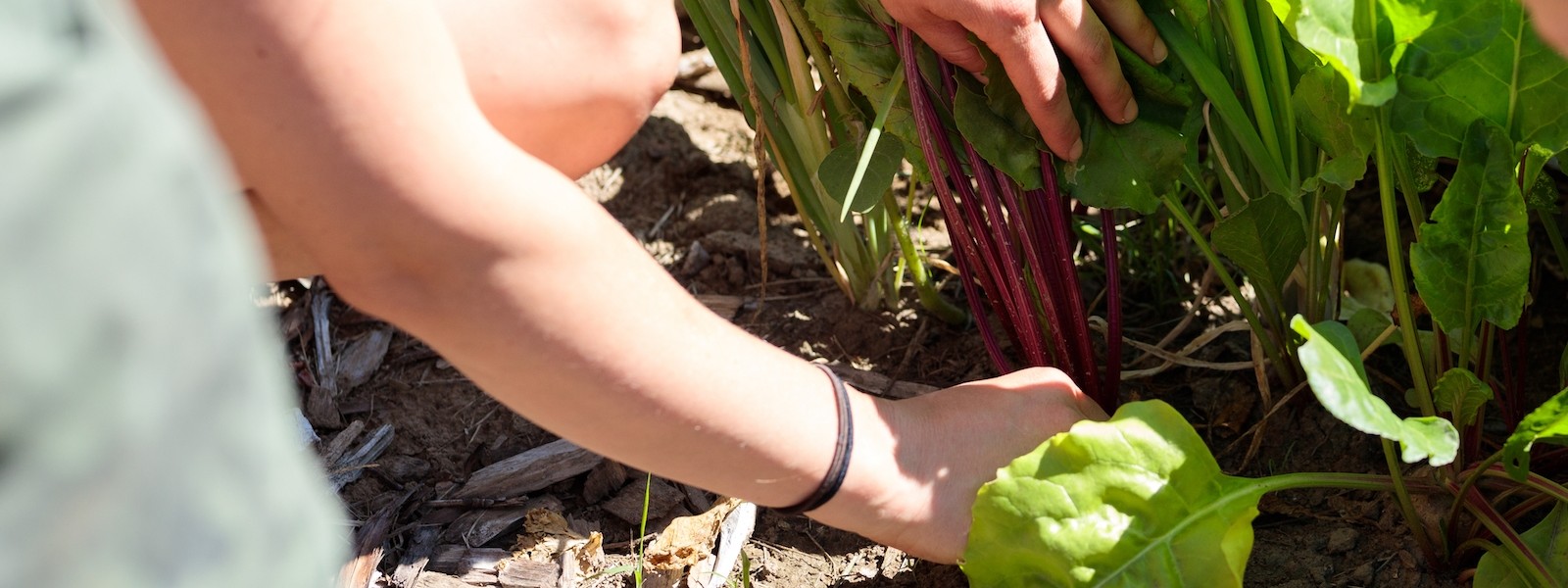Saving Seeds
Seed saving used to be a necessity in times past. Gardeners would go into their gardens and select seeds from their best fruit to grow for the next season. However, the rise of commercial seed companies has taken gardeners away from this often meticulous activity. There has been a revitalization over the years in knowledge and interest around seed saving and we strongly encourage this rewarding practice. It is a wonderful way to not only promote greater agricultural biodiversity but to, literally, take your seeds into your own hands.
In this tip, you will find a basic discussion of seed saving, starting with some basic biology.
Pollination
Understanding the process of pollination is an important part of being a seed saver! In order for seed to be produced, pollination must occur. Pollination occurs when pollen from the male part of a flower (stamen/anthers) comes into contact with the female part of a flower (pistil/stigma). When pollination is successful it results in a zygote, or a fertilized egg, that matures into a seed.
Plants have either perfect or imperfect flowers. Further, plants are either self-pollinated or cross-pollinated. Perfect flowers have both male and female parts. Self-pollination occurs in perfect flowers when pollen (male) is taken to the stigma (female) on the same flower. Beans and chiles are examples of self-pollinating plants. Imperfect flowers are either simply male or simple female. Cross-pollination happens in imperfect flowers when pollen is transferred by wind or insects from a male flower to a female flower. Squash, melons, and cucumbers are examples of cross-pollinating plants with imperfect flowers. Hybrid seeds come from a cross that are genetically dissimilar and it is difficult to save seeds from these plants. For more information, visit our page on Heirlooms Vs. Hybrids.
Saving the Seed
It is easiest to begin your adventure into seed saving with self-pollinating vegetables. Seeds can be classified into three categories based on their level of complexity in saving. We recommend that you begin with saving seeds in the beginner category before graduating.
Beginner: bean, lettuce, pea, pepper, tomato
Experienced: corn, cucumber, muskmelon, radish, spinach, squash, pumpkin
Expert: beet, swiss chard, cabbage family, carrot, escarole, frisee, onion, radicchio, turnip, Chinese cabbage
Careful observation is the first step when saving seeds. When to harvest the seeds of a plant depends on whether the seeds are produced in a “dry” or “wet” fruit. Dry harvest fruits, chiles, peas, beans, most greens and herbs, wheat, gourds, etc., should be harvested when their fruit/seeds are dry and have begun to either rattle in their pods or begin to fall from the plant. Wet harvest fruits, melons, cucumbers, tomatoes, etc., should be harvested when their fruit is slightly over-ripe but certainly not rotten. In this case, the fruit is split open, the seeds scooped out and then allowed to dry. However, though it is important to wait until the time is right to collect your seeds, you must watch for the best fruit in which to save seeds from. Select your fruit based on the most desirable traits in your eyes, taking flavor, date to maturity, color, size, and disease-resistance into consideration and then tag it so you will know which to save seeds from.
Dry beans are probably the easiest crop from which to save seeds. Simply by harvesting them, you are collecting their seed. The delicious bean you eat can also be planted in your garden the next year. See our tip in Dry Bean Seed Saving for more information.
Tomatoes are second to dry beans! They are a great way for a beginner seed saver to experiment with developing your own unique tomato variety. Tomato Seed Saving will tell you more.
Calendula flowers are gorgeous. Why not save their seed? Calendula Seed Saving will fill you in in how to do it.
Winter squash can be a little complex for saving seeds because of how they are pollinated. Learn more in Winter Squash: Saving Seeds.
Storing Seeds
Make sure all seeds are completely dry before storing. Storing them in a paper envelope or ziplock bag works well. Make sure they are well-labeled with variety and date. Store in a cool, dry place as humidity or sunlight will degrade them over time and may even cause germination.
Sources
CCF staff
Fedco Seeds
Native Seeds
Tomato Dirt
Interested in learning more? The Grower’s Library at Johnny’s Selected Seeds may have the information you’re looking for.

